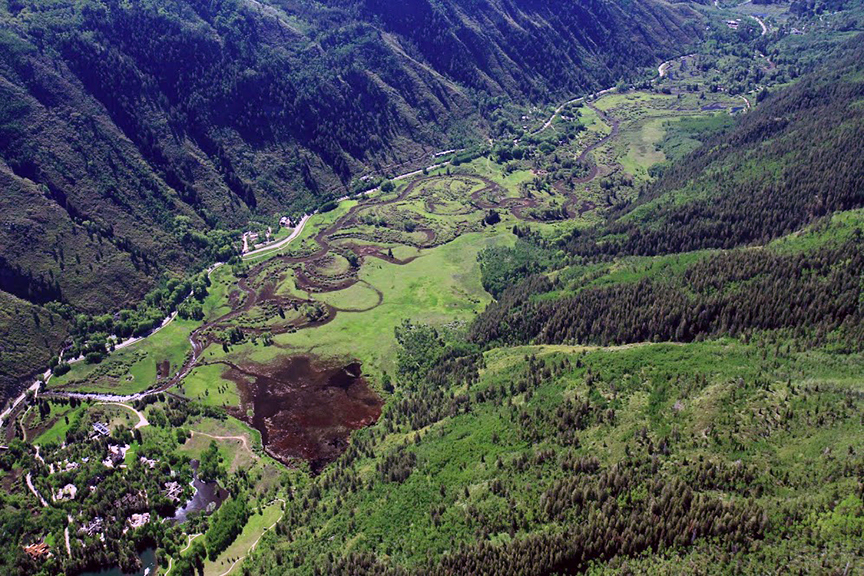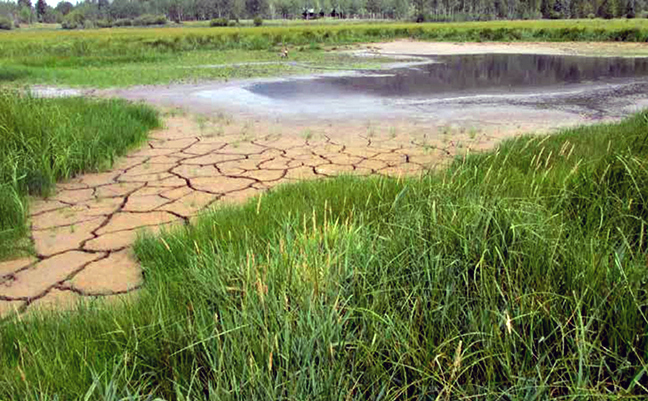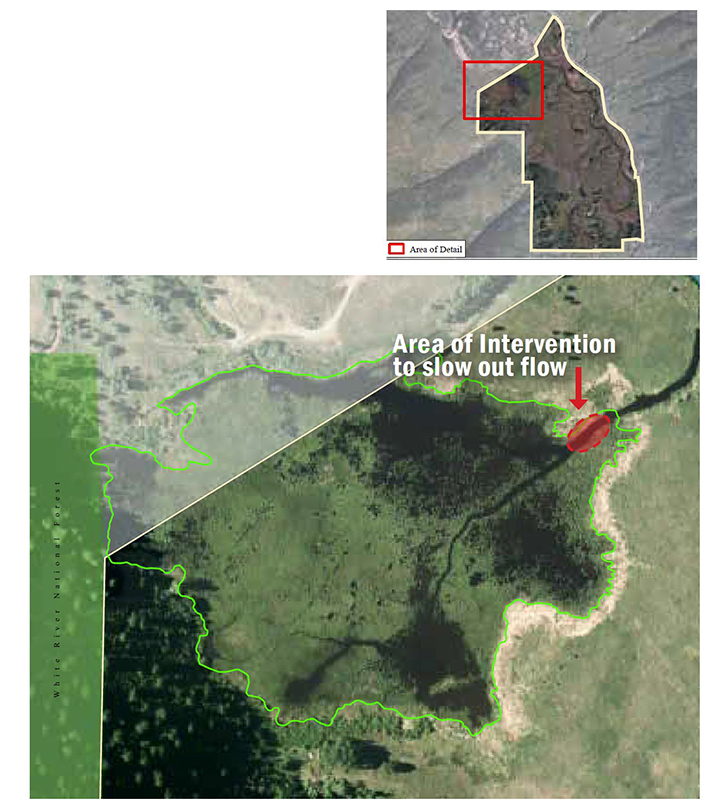Time to fix the leak at North Star’s fen

The North Star fen is the dark, pond-like area.
What does it take to enhance a wetland at North Star Nature Preserve? Sometimes not too much! Open Space and Trails will soon begin a wetland restoration project at the Preserve.
With minimal impact on the existing conditions, the Fen Wetland Restoration Project involves moving soil to fill an old ditch, more or less plugging an old drain that has caused drying of the wetland. The goal is to restore the functionality of the fen by promoting more standing water, similar to historic conditions.
In the northern part of the Preserve sits a nearly 14-acre fen wetland, estimated to be about 6,700 years old, though it could be even older! Fen wetlands or “old-growth wetlands” are rare landscape elements, defined by distinct soils and hydrology. They not only provide important habitat for waterfowl and amphibians, but also play a role in carbon sequestration and groundwater storage. Unfortunately, this unique wetland on the outskirts of Aspen has been impacted by several artificial ditches that were created in the 1950s. These ditches were dug in an attempt to drain the area so the land would be dry enough for use as hay fields or livestock pasture.
Today, the property is managed primarily for the benefit of wildlife and ecological integrity. To that end, the goal of this restoration project is to lessen the amount of water that flows out of the fen by installing a wetland “plug” in the main drainage ditch that currently connects the fen with the Roaring Fork River. Less water flowing out of the fen will increase the extent and duration of surface ponding and will promote water infiltration into deeper soils, both of which enhance the functionality of the fen wetland. The project also includes four small structures in two of the smaller ditches. These “structures” are simple, certified weed-free straw bales and wattles placed across the ditches to simultaneously slow surface water outflow and provide organic material that will encourage growth of native sedges.
This project includes numerous measures to minimize impact on the ecosystem. Construction activities will be very limited in their extent and are excluded entirely from the fen itself. Ground protection tracks will be used to minimize disturbance and compaction, and work in the two smaller, more remote ditches will be done entirely by hand. Project implementation will be compressed to less than a month, and even the timing is intentional – mid-summer is not a critical period for wildlife use of the Preserve, and it avoids migration, mating, calving, critical foraging and nesting seasons. Reclamation work will use local topsoil and native seed mixes to optimize revegetation success, and will be followed up with an opportunity for community participation to help with wetland plantings in the spring. We hope you’ll stay connected to come learn first-hand about wetland grasses, rushes and sedges!
OST sends many thanks to the private property owners in the area who have been supportive, collaborative and enthusiastic for this project, which will benefit all life in the area.
By Pitkin County Open Space and Trails

The goal is to curb the drying of the fen, seen here in 2018.

The project location, in the northwest corner of North Star Nature Preserve.
